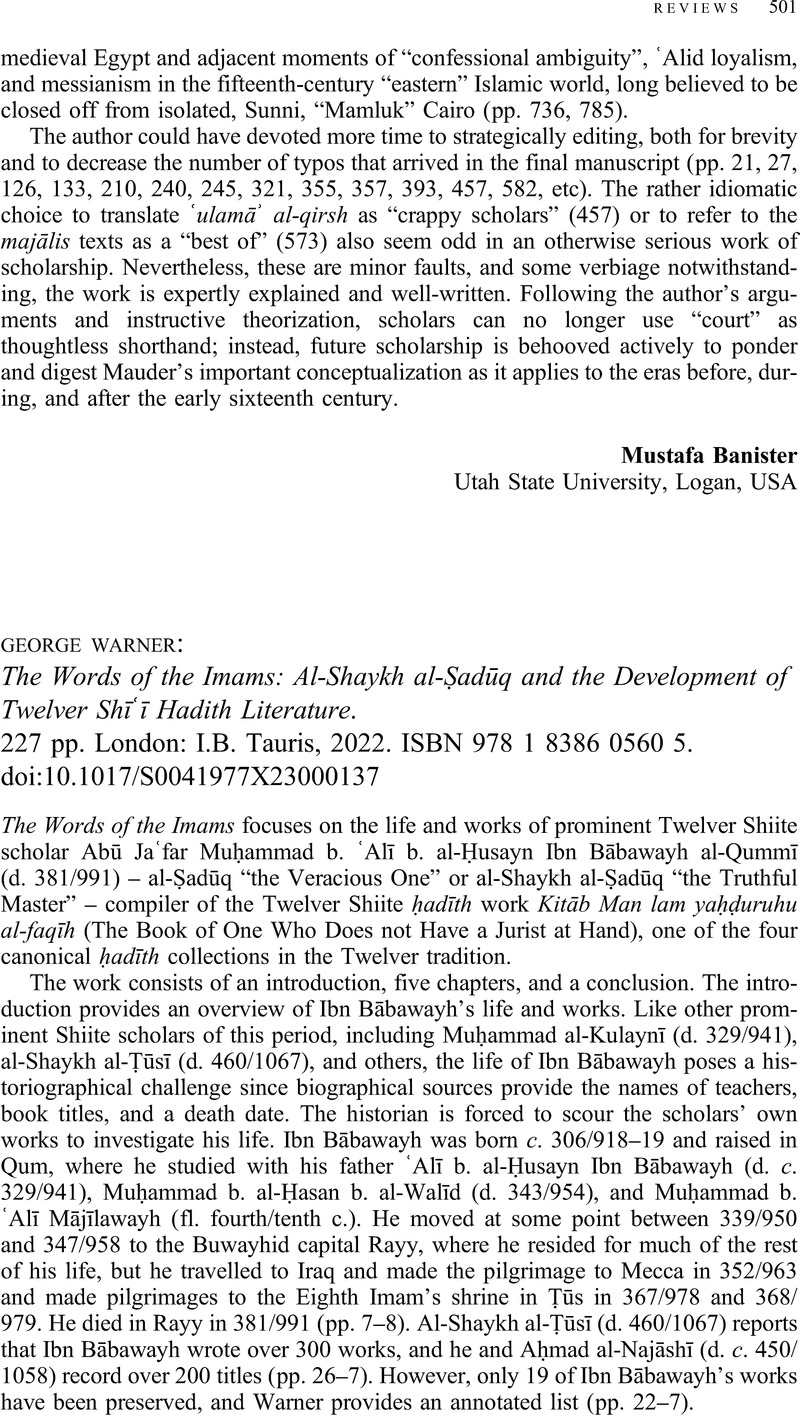No CrossRef data available.
Article contents
George Warner: The Words of the Imams: Al-Shaykh al-Ṣadūq and the Development of Twelver Shīʿī Hadith Literature. 227 pp. London: I.B. Tauris, 2022. ISBN 978 1 8386 0560 5.
Review products
George Warner: The Words of the Imams: Al-Shaykh al-Ṣadūq and the Development of Twelver Shīʿī Hadith Literature. 227 pp. London: I.B. Tauris, 2022. ISBN 978 1 8386 0560 5.
Published online by Cambridge University Press: 20 April 2023
Abstract
An abstract is not available for this content so a preview has been provided. Please use the Get access link above for information on how to access this content.

- Type
- Reviews: The Near and Middle East
- Information
- Copyright
- Copyright © The Author(s), 2023. Published by Cambridge University Press on behalf of SOAS University of London



